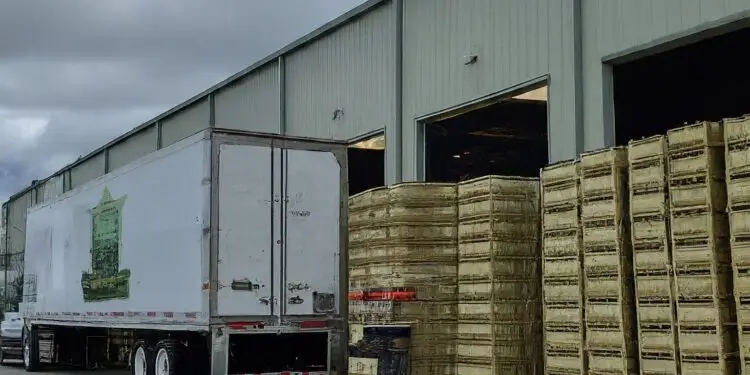Things to Consider Before You Choose a Liquor Distributor
The US liquor distribution industry is a complex web of regulations and relationships, making it a challenging landscape for small spirits brands to navigate. This article offers a comprehensive analysis of the industry, focusing on the changing dynamics between large and boutique distributors, and providing insights and recommendations for small brands seeking to choose the right distribution partner.
The U.S. liquor distribution industry has evolved significantly, but navigating it remains a challenge for small spirits brands. With the dominant three-tier system in place, distributors continue to play a critical role in getting products from producers to retailers. However, changes in the way large distributors operate, combined with the rise of boutique and delivery-only distributors, have created a complex environment for emerging brands.
RELATED ARTICLE:
Texas TRU Distribution: A Cautionary Tale for Producers and Distributors
The Three-Tier System: Traditional Roles of Liquor Distributors
In the U.S., most states operate under the three-tier system for alcohol distribution. This structure, established after Prohibition, involves three distinct layers: producers, distributors, and retailers. Producers, which include distilleries, breweries, and wineries, create the alcoholic products. Distributors act as the middlemen, buying products from producers and selling them to retailers. Retailers, in turn, sell alcohol to the final consumers.
The three-tier system was designed to regulate alcohol sales, prevent monopolies, and ensure proper taxation. Distributors were expected to provide valuable services, including warehousing, delivery, marketing, and sales support. However, this traditional model has undergone significant changes in recent years, particularly as large distributors shift their focus.
Large vs. Boutique Distributors: A Changing Landscape
Over time, the role of distributors has changed, especially among the larger companies. Large distributors are moving away from offering comprehensive sales services. Instead, they are focusing more on delivery and logistics. This shift can be problematic for smaller brands trying to break into new markets, as these distributors are less likely to prioritize them. Small brands often get lost in a vast portfolio, leading to reduced visibility and marketing support.
In contrast, boutique distributors offer more personalized service. These smaller companies can be more agile and willing to work closely with new brands. However, they face their own challenges, such as limited resources and higher failure rates. Many boutique distributors struggle to maintain adequate cash flow, leading to insolvency and an inability to fully support the brands they represent. This exposes small spirits brands to significant risks.
Challenges with Large Distributors
For small spirits brands, working with large distributors presents a double-edged sword. On the one hand, large distributors have the infrastructure and reach to get products into numerous retail locations. However, as they shift away from sales and marketing support, smaller brands may find themselves deprioritized.
Large distributors often focus on established brands that generate consistent revenue. For a small brand, this means they are less likely to receive the attention needed to grow their market share. As a result, their products may languish in warehouses or be overlooked by sales teams. In some cases, this can lead to the brand fading into obscurity.
Additionally, large distributors take significant margins for their services, including delivery and logistics. These high costs can eat into the already thin profit margins of emerging brands. Moreover, large distributors often require exclusivity, making it difficult for small brands to seek out additional sales channels.
Boutique Distributors: A Risky but Necessary Choice
While boutique distributors offer more hands-on service, they present their own set of challenges. Small spirits brands might choose a boutique distributor to gain better representation and focus. However, these smaller distributors often lack the resources to support the long-term growth of a brand.
The failure rate among boutique distributors is high. Many small distributors struggle with cash flow issues, leading to financial instability. When a distributor goes out of business, the brands they represent are left scrambling to find new distribution partners. This disruption can cause significant delays in getting products to market, ultimately harming the brand’s reputation and sales.
Moreover, boutique distributors are often closely tied to the temperament and ethics of their owners. This can expose brands to reputational risks if the distributor engages in unethical or unprofessional behavior. As a result, small spirits brands must thoroughly vet boutique distributors before entering into agreements.
Delivery-Only Competitors: A New Player in the Market
As large distributors continue to scale back their sales and marketing services, a new breed of delivery-only competitors has emerged. These companies focus solely on logistics and delivery, often at a lower cost than traditional distributors. For small brands, this can be an attractive option, particularly if they already have a strong sales team or are working with independent sales representatives.
Delivery-only companies provide flexibility, allowing brands to handle their own marketing and sales efforts. By cutting out the middleman, small brands can maintain more control over their distribution process. However, these companies do not offer the same level of market access as full-service distributors, which can limit a brand’s reach.
Protecting Your Brand: 10 Strategies for Small Spirits Brands When You Choose a Liquor Distributor
Given the complexities of the distribution landscape, small spirits brands must take proactive steps to protect themselves. Whether working with large distributors, boutique distributors, or delivery-only companies, these strategies can help mitigate risks and increase the chances of success:
1. Conduct Thorough Research
Before entering into any agreement, thoroughly research potential distributors. Look for their financial health, market reputation, and the brands they currently represent. Ensure the distributor aligns with your brand’s goals and values.
2. Prioritize Transparency
Transparency is crucial when negotiating with distributors. Ensure that the distributor provides clear information about their fees, services, and expectations. Avoid signing contracts with vague terms or hidden fees.
3. Focus on Performance Metrics
When working with a distributor, establish clear performance metrics. These should include sales targets, marketing commitments, and timelines. Regularly review the distributor’s performance to ensure they are meeting your expectations.
4. Limit Exclusivity Agreements
Avoid signing exclusive distribution agreements, especially with large distributors. This allows your brand to explore additional sales channels and prevents over-reliance on one distributor.
5. Vet Small Distributors Carefully
When considering a boutique distributor, vet their financial stability and business ethics. Ensure that they have a solid business plan and can provide the necessary resources to support your brand. Avoid high pressure sales tactics to compel you to sign, they are a sign that the distributor will do the same with potential customers.
6. Diversify Your Distribution Strategy
Relying on a single distributor can be risky, especially for small brands. Consider diversifying your distribution strategy by working with multiple distributors, including boutique and delivery-only companies.
7. Negotiate Margins and Fees
Margins and fees can significantly impact your bottom line. Negotiate terms that work for your brand, particularly with large distributors that tend to take higher margins.
8. Build Your Own Sales Team
If possible, invest in building your own sales team. This allows you to maintain control over your brand’s representation and marketing efforts, reducing reliance on distributors for sales support.
9. Monitor Your Brand’s Placement
Ensure that your distributor is properly placing your products in retail locations. Regularly check that your products are displayed prominently and receiving the attention they deserve.
10. Be Prepared for Change
The distribution landscape is constantly evolving. Stay informed about industry trends, new competitors, and potential changes in distributor services. Being adaptable can help your brand survive in a challenging market.
Conclusion: How to Choose a Liquor Distributor
Choosing the right distributor is a critical decision for any small spirits brand. The traditional three-tier system, while still in place, has shifted as large distributors move away from providing sales support. Boutique distributors offer a more personalized approach but come with their own set of challenges, including financial instability.
Delivery-only competitors provide a new option for small brands, offering lower-cost logistics without the added sales services. For small spirits brands, the key to success lies in conducting thorough research, negotiating favorable terms, and maintaining control over their brand’s sales and marketing efforts.
By following the ten strategies outlined in this article, small spirits brands can protect themselves from the risks associated with both large and small distributors. With careful planning and adaptability, it is possible to to increase your chance of success when you choose a liquor distributor for your brand.
- How to Sell a Small Business: A Starter Guide for Business Owners - February 3, 2025
- European Shares Drift Lower Amid France’s Debt Woes - November 27, 2024
- FTSE 100 Modestly Higher In Cautious Trade - November 27, 2024









